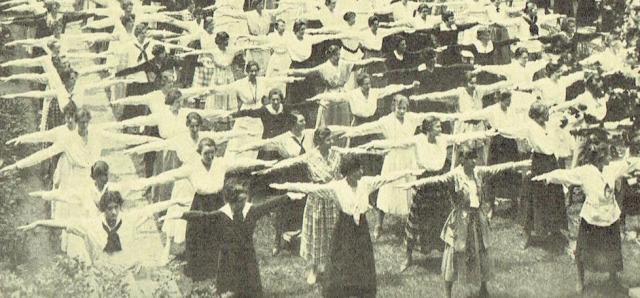Kean History Told in New Pictorial

If a picture is worth a thousand words, then a new history of Kean University is a tome of epic proportions. Kean University, The Campus History Series, tells the story of Kean University through photographs and images, 213 of them.
The photographic history takes readers from the University’s origins in 1855 as a normal school for teacher training in Newark to the modern, international University that it is today. Along the way, the photos reveal social and cultural change in America as it played out on Kean’s campus.
“Our intent was to show how the transformation of Kean tells the story of the transformation of higher education in America,” said College of Liberal Arts Acting Dean Jonathan Mercantini, Ph.D., one of the authors of the book. “Kean is a great example of the successes of the American higher education system. The pictures also highlight key parts of our identity, for example, how teaching a diverse population of students has been part of the school's mission since the beginning.”
The book is published by Arcadia Publishing and is co-authored by Kean University Archivist Erin Alghandoor, Distinguished University Professor Frank J. Esposito, Ph.D., and Department of History Chairperson Elizabeth Hyde, Ph.D., in addition to Mercantini. They collaborated on the yearlong project, digging for photos in the University Archives and University Relations collections.
“I particularly enjoyed the chapters on the University when it was in Newark, before it was a university,” said Alghandoor. “I loved going through the yearbooks and the course catalogs and other publications to get explanations for the pictures.”
A favorite photo of both Alghandoor and Mercantini is on page 24 of the book. It is from Kean’s early days as Newark Normal School and shows students, most of them women dressed in long skirts, exercising outdoors in the school’s “sunken garden.” A caption from the 1938 yearbook notes that the students would line-up in “military formation” while “Mr. D’Angola, armed with amplifier, would shout directions for formal gymnastics.”
“Trolleys and people would stop and watch them do their exercises together outside,” said Alghandoor.
Casual readers can pick up the book, turn to a chapter and skim through the photos and captions for a snapshot of Kean at any given point in its history. Serious readers might prefer to start at the beginning and watch the evolution of the University unfold. Major historical events ripple through the Kean community, including the Civil War, World War I, the Great Depression, World War II, the Vietnam War, the civil rights movement and the 9/11 terrorist attacks. There are photos of visitors to the campus, including Eleanor Roosevelt, Dr. Martin Luther King Jr., Count Basie and others.
“The student newspaper on October 21, 1976 contained stories on a visit to campus by President Gerald Ford and a concert by Bruce Springsteen after the release of his Born to Run album,” said Mercantini. “Those photos, I think, capture the breadth of the history of Kean’s campus.”
A chapter entitled A Global University sets the stage for the modern Kean University, with the development of Kean Ocean in Toms River, Wenzhou-Kean University in China, and the Kean Skylands campus in Sussex County as well as the addition of state-of-the-art buildings and research facilities.
“We have such an exciting history,” said Alghandoor. “We will know ourselves and each other better by flipping through the pages and sharing stories, especially since today’s students, faculty and staff are part of Kean’s history.”
Kean University, The Campus History Series is on sale at the Kean University Bookstore in the Green Lane Academic Building and at the Liberty Hall Museum gift shop, as well as online through Barnes & Noble and Amazon.